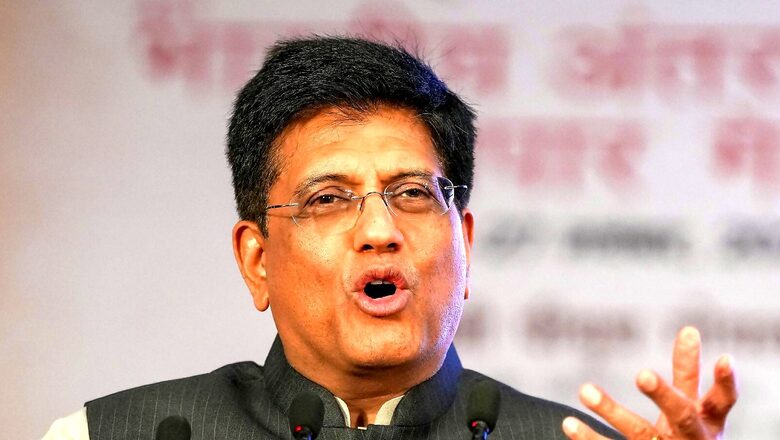
views
Semiconductors as well as infrastructure and domestic manufacturing are some of India’s strategic priority sectors, Union Minister for Commerce and Industry Piyush Goyal said on Saturday at the 27th edition of Wharton India Economic Forum.
At the event, Goyal noted that structural reforms implemented by the government over the last eight years will help India rank among the world’s top three developed economies.
He mentioned GST as one of the important reforms, emphasising that despite the challenging global environment, recent GST collections have been very robust, as well as Insolvency and Bankruptcy Code (IBC), which is another critical reform measure that has resulted in strong banking systems in the country.
Talking about India’s priority sectors, such as infrastructure, semiconductors, and domestic manufacturing, Goyal cited Prime Minister Narendra Modi’s aim to build a robust infrastructure in India and stated that the private sector is also helping in this endeavour.
“Semiconductor is another critical sector for the Indian economy. Another important area is domestic manufacturing, and the government has introduced PLI schemes to kick-start Indian manufacturing in over 14 sectors. The government is also encouraging the private sector and industry associations to determine themselves what support in what areas it needs from the government.”
Semiconductor In Particular
India had launched the Semiconductor Mission with the aim of building a vibrant semiconductor and display ecosystem to enable the country’s emergence as a global hub for electronics manufacturing and design.
The mission, led by global experts in the semiconductor and display ecosystem, seeks to serve as a focal point for the comprehensive, coherent, efficient, and smooth implementation of the program for the development of the ecosystem in collaboration with government ministries, departments, agencies, industry, and academia.
Last year, the Union Cabinet approved changes to the government’s Rs 76,000-crore semiconductor production linked incentive (PLI) scheme, allowing for uniform fiscal support of 50% of project cost for semiconductor fabs across technology nodes and display manufacturing.
Additionally, an increase in fiscal support was also announced for compound semiconductors, packaging, and other semiconductor facilities to 50% from 30% previously.
Around the same time, it was announced that Karnataka may get India’s first semiconductor facility after the International Semiconductor Consortium’s (ISMC)-proposed $3 billion fab. This facility is expected to begin construction in February this year.
Another example of private players’ role in making a competitive ecosystem in the country would be the announcement of a Rs 1.54 lakh crore investment by Vedanta, an Indian conglomerate, and Foxconn, a Taiwanese manufacturer.
These private players said last year that they will be building semiconductor and display production plants in Gujarat. The construction is expected to begin in the next two-and-a-half years.
While India is still waiting for its first semiconductor manufacturing facility, the industry in the country is expected to grow by $400 billion by 2025 due to the fact that the demand for semiconductor goods is increasing by the day.
However, regarding the overall ecosystem, Union Minister Goyal said: “In the last few years, India has been focused on building enabling infrastructure, environment, to attract investors who believe in a robust, rules-based system. He said the focus is on structural reforms, massive infrastructure development, digitization, and the huge talent that India is offering to the world, which is helping rewrite India’s future.”
“Government will continue to support manufacturing to create jobs for a large number of people, focusing on digitization, making India a knowledge-based economy,” he added.
Read all the Latest India News here



















Comments
0 comment